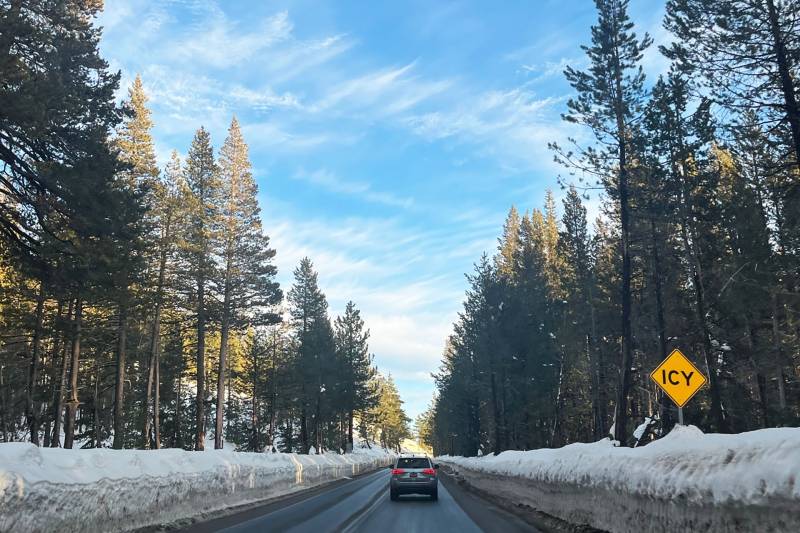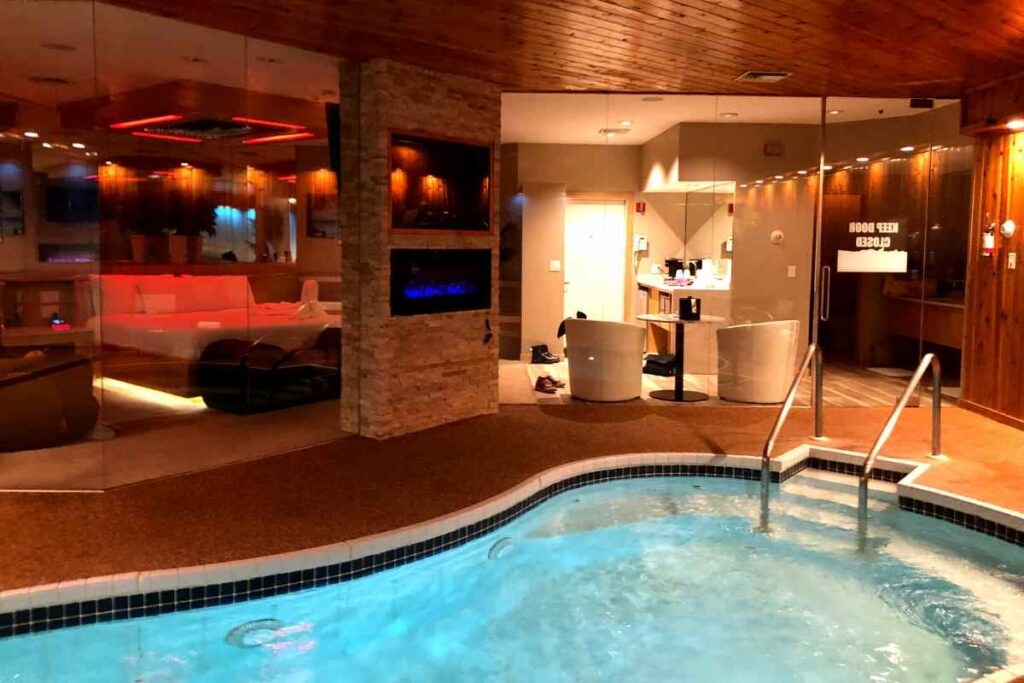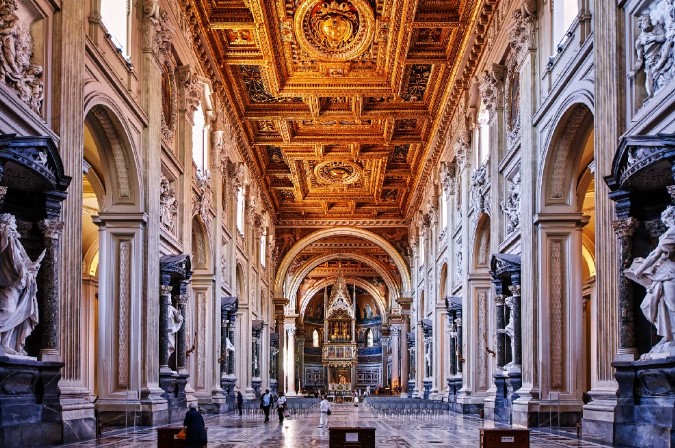
Are we at the tail end of the app economy, especially when it comes to tourism? Do they make fiscal sense anymore (to build, maintain, or even buy) in the light of crowdsourced trip reviews, Live View on Google Maps, social media feeds, and nomad influencers roaming the world posting sunsets from remote spots?
After not seeing much of Los Angeles, my adopted city, during COVID, I wanted to explore it again with a fresh eye. Much has changed in the past few years; many businesses have shuttered or shifted to reduced staffing hours. But the tourists are flooding back to Southern California. How are they navigating the city today? To find out, I downloaded a few LA visitor apps and grabbed my Tap mass transit travel card. Here’s what happened.
GPSMyCity
(Credit: S.C. Stuart)
While standing in Beverly Hills, opposite the famous City Hall, I jumped onto the free city Wi-Fi and downloaded GPSMyCity app(Opens in a new window) from Google Play, allowing it to use GPS precise location while the app was in operation. I waited for it to triangulate satellite-based mapping data from 12,500 miles above my head, then suggest places to go. But it did not, seriously missing a trick.
In the app’s menu, I saw a bunch of articles, including California Dreamin’—Things to Do in LA, The Ultimate Guide to Koreatown, and The Hidden Staircases of Silver Lake. But I was at least 6-8 miles away from any of those destinations. I typed “Beverly Hills” into the search function and got a full page ad for on-site robust internet connectivity. I tapped the X to close the ad and looked through fairly generic descriptions of the city—the same paragraphs you’d get in any short-form guide.
Scrolling down, I saw “Boris Karloff’s Former Home,” clicked the red GO THERE rectangle and got a pop-up that said “The requested function is available only in the full version. A 3-day free trial is offered for you to test drive the app.” I uninstalled, unimpressed.
On a nearby stump, I saw a picture of Beverly Hills THEN and NOW with a QR code. I scanned it and watched a 2-minute video(Opens in a new window) from the Beverly Hills Historical Society about the history of where I was standing. This was more like it. But I couldn’t see a map that would lead me from one QR code to the next, on a magical mystery style tour. I gave up and went home.
Google Maps and AR
(Credit: Google)
I wondered if apps just aren’t cutting it anymore. It’s hard to keep the content fresh, and accurate, without an in-house writing team, and there’s no business model behind that anymore, when $78.51 billion goes to mobile search. Are we meant to cobble together our own city-based guides, DIY-style, now?
Sure, I use Google Maps all the time, and I noticed that the number of commercial pins has increased dramatically. Some of them are relevant, but a lot are not. But, for the purposes of this story, I clicked on Updates, which I usually ignore, and found “Latest in the area” content with content from local guides(Opens in a new window).
There were several glowing reviews of a restaurant I’d not tried. Thanks to Google’s multitudinous feeds integration, I could scroll down and make a reservation, see the menu, find out when it’s busiest, and so on. This is okay, but it’s a laborious way to put together a self-directed itinerary for tourists. But things are looking up in that respect.
A 2022 post on Google Maps’ Immersive View(Opens in a new window) describes how advances in computer vision and AI have led the tech giant to fuse together billions of Street View and aerial images to create a rich, digital model of the world. Live View is helpful, detailing when a business is open and how crowded transit routes are. Using the new ARCore Geospatial API, developers can layer on real-time augmented reality functionality to city-based content, wherever Street View is available.
But it’s completely fragmented—there’s no editorial vision or accuracy to the verbiage itself. I guess this is due to the nature of today’s internet. No one is in charge (not even Elon). But it doesn’t make for a cohesive take on a city for tourists or locals.
Discover Los Angeles
(Credit: Los Angeles Tourism & Convention Board)
In Downtown LA, I downloaded the official guide from the Los Angeles Tourism and Convention Board(Opens in a new window) and was instantly taken with the UI—strong bands of color across the screen to aid primary navigation, options like DO, EAT, STAY, EVENTS (which pretty much sums up a city-based experience), and a real-time weather feed at the top. So far, so good.
Selecting DO gave me a game-play feel of either/or under the title WHAT WOULD YOU RATHER DO (yes, all the headings were in caps and I’m still conditioned to think that’s shouting, but I digress). Either GO TO AN EVENT or EXPLORE EL PUEBLO DE LOS ÁNGELES (i.e. are you a thrill-seeker or historical enthusiast?).
I clicked More Options, and got TOP HOLLYWOOD NIGHTCLUBS vs K-TOWN SHOPPING GUIDE (my clubbing days are behind me, and I’ve never understood retail therapy). I kept clicking through and got to CHARLIE CHAPLIN’S LA, which sounded cool, before the app crashed.
I restarted the app and got back to this section. It was very slow, but finally it triangulated my current GPS with opening times of the Little Tramp Costume at the Natural History Museum. That didn’t appeal so I kept swiping left and right (yes, Tinder-style navigation) and moved through mini articles on locations where Chaplin shot famous silent films such as The Kid (1921). That sounded interesting so I selected Get Me There and it (eventually) loaded in Google Maps.
I forgot to mention that there’s a dancing taco at the bottom left of the screen, which irritated me to no end. For the purposes of research, I clicked it, hoping to make it stop. It was promotional content for dineL.A. from five years ago. I tried to return to Charlie Chaplin’s L.A. but the map still hadn’t materialized. It crashed entirely at this point. I gave up and uninstalled the app.
Trying TikTok
(Credit: Getty Images/SOPA Images/LightRocket)
On every photogenic corner in LA, there’s someone shooting a TikTok, or something similar in the way of short-form frenetic content. So I opened TikTok and searched for “L.A. City Guides.”
It was a mixed bag, as one might expect, but there were some standout contributors, including Kari(Opens in a new window), who seems to be perpetually crisscrossing the US as a travel vlogger. Her guide(Opens in a new window) is engaging, if rather jam-packed (several commenters pointed out “This isn’t a day in L.A., it’s at least 72 hours of stuff”). But Kari and her microphone green-screened against sunny images felt a little off—I couldn’t work out if this was a dream trip, or actual experience.
Another self-appointed travel guru(Opens in a new window) took a more vintage slant on the City of Angels, offering up mid-century modern houses, and 1920s garden tours, while asking followers for input on future content. I can see the value in this—an interactive guide for armchair travelers in need of sunny vibes (particularly during the winter months).
The most comprehensive one was Alanna(Opens in a new window), who offers in-the-know tips for a day in LA by avoiding the usual tourist traps and recommending cool stuff to do for cash-strapped visitors, including donuts for breakfast at the Farmer’s Market (“Bring cash, they don’t take cards!”); Griffith Observatory (“Best museum in LA—and it’s free, I repeat – it’s free!”), and a stroll down historic Olvera Street and nearby Chinatown.
As is customary on TikTok, Alanna responded to comments about distances covered, and safety issues, before posting fresh content to keep her followers coming back.
Los Angeles Times
Still in DTLA, I looked up and spotted the (former) historic LA Times newspaper headquarters. It occurred to me that the local newspaper, which launched 142 years ago, might have a good guide for tourists, or residents in need of a refresh.
Recommended by Our Editors
I downloaded the app(Opens in a new window), but it opened straight onto the news headlines. Navigation along the bottom offered eNewspaper, COVID-19 (still), Media (video-based news) and My Library (saved articles to read later). At the top my options were: Top News, California, Sports, Food, and More – I clicked More, hoping for a “Guide to L.A.”
But there was no tourist guide to be found, “More” merely opened a left-to-center slide navigation of all the usual sections in the newspaper from Housing to Company Town (Hollywood-insider industry coverage), Real Estate to Obituaries (there’s a joke there, and it’s a good one; Nora Ephron already wrote(Opens in a new window) it in When Harry Met Sally).
Seriously? No tourism section! I couldn’t believe the publishing side of the house had missed this commercial trick. I typed in “GUIDE TO L.A.” in the search bar. Nothing relevant, just a string of (truly depressing) news. I uninstalled it.
Nostalgia Trip
At this point I got really nostalgic for Vindigo(Opens in a new window). In 1999, when I had a Palm Pilot, the city guide Vindigo was a revelation. Despite the fact we didn’t have pervasive Wi-Fi back then, and you had to HotSync the Palm PDA device to get updated listings, it was everything you needed to navigate the cityscape: opening times, entertainment listings, restaurant reviews from Zagat, and turn-by-turn directions from the nearest intersection.
You could even write your own notes (if you’d mastered the proprietary “graffiti” recording functionality(Opens in a new window) using its stylus), and it would pass them onto Zagat for possible inclusion. Yes, it was grayscale and the UX was rudimentary, but it was brilliantly executed, within the parameters of late ’90s technology (it also took up less than 700kB; imagine that with today’s bloated apps).
If you do a search(Opens in a new window) on LinkedIn for former Vindigo employees, you’ll find all the names that made the Silicon Alley (NY, not SF) scene great, including Dennis Crowley(Opens in a new window), who went on to co-found Foursquare. Crowley, who was pink-slipped from Vindigo during the 2001 dotcom crash (like almost everyone else), has posted retro glimpses(Opens in a new window) of the app’s heyday on his Twitter feed(Opens in a new window).
Web3 Futures
Indeed, Crowley might be about to bring the best of yesterday’s Vindigo-style city guides to tomorrow’s Web3 mapping protocols in his latest venture, LivingCities(Opens in a new window).
It’s still very much under wraps, but his co-founder, Matt Miesnieks (former CEO at 6D. AI(Opens in a new window), now part of Niantic) wrote(Opens in a new window) something of a manifesto for LivingCities around “Building one layer above today’s mapping platforms [and focusing] on the experiences, applications, and interfaces to enable those applications in real places.”
“New AI adjacent creative technologies allow us to express ourselves in 3D similarly to how camera-phones allowed us to express ourselves in 2D on mobile,” notes Miesnieks. “Meta (Facebook) calls their AR Cloud research project ‘Live Maps’ and I think that’s a great name for what needs to exist. These digital-twins need to be connected to the real place in both directions, all the real-time signals of life from the weather to the people walking by, to the sounds, and shifting objects in the streets need to be reflected into the digital.”
Sounds like LivingCities is incubating something much needed in the location-based mesh-enhanced future of leisure travel. Because engaging TikTok-ers aside, today’s tourist apps aren’t cutting it—and we can’t expect out-of-towners to go all DIY with Google Maps and random pins.
Like What You’re Reading?
Sign up for Tips & Tricks newsletter for expert advice to get the most out of your technology.
This newsletter may contain advertising, deals, or affiliate links. Subscribing to a newsletter indicates your consent to our Terms of Use and Privacy Policy. You may unsubscribe from the newsletters at any time.









